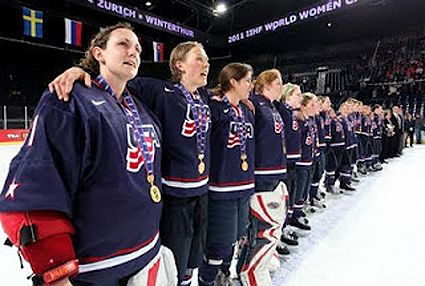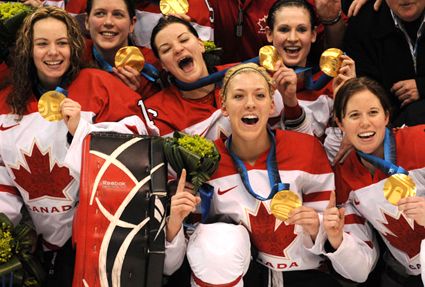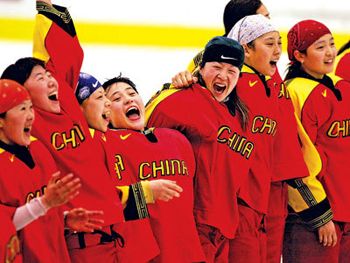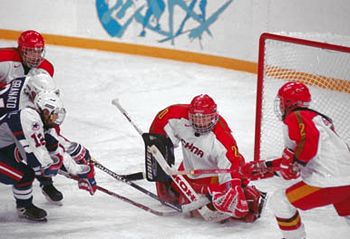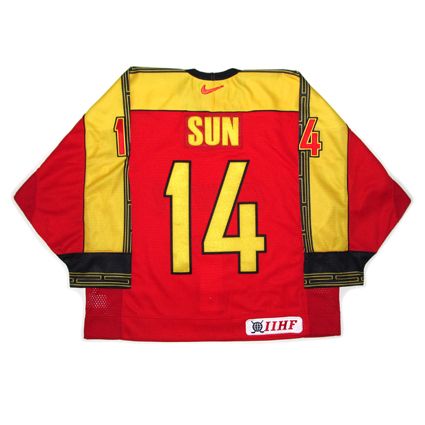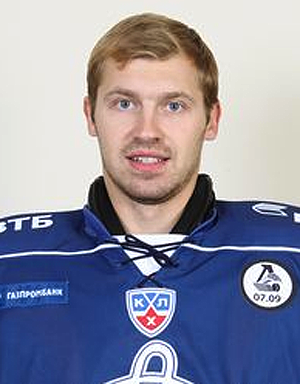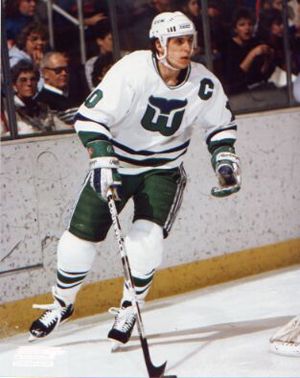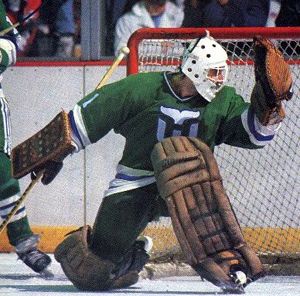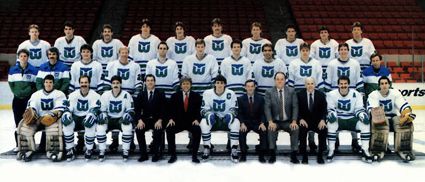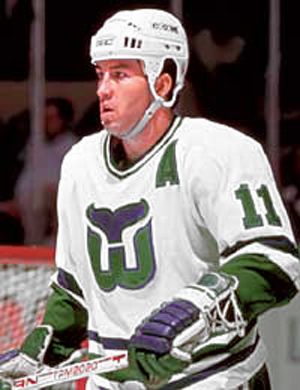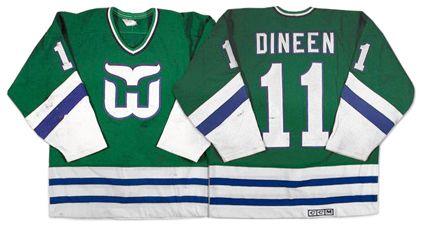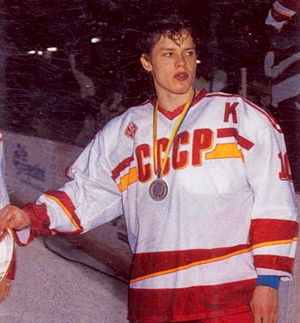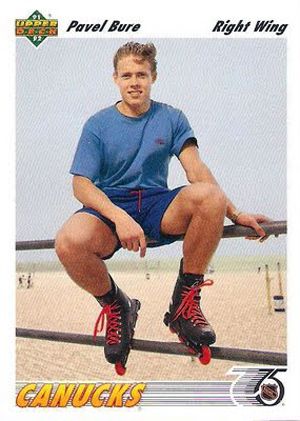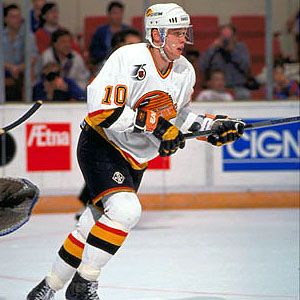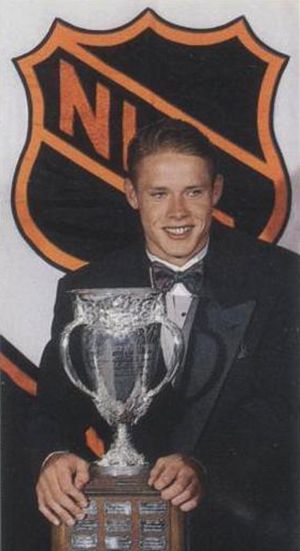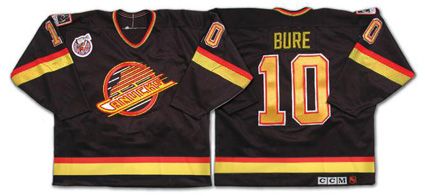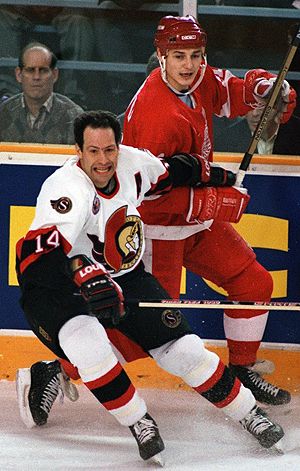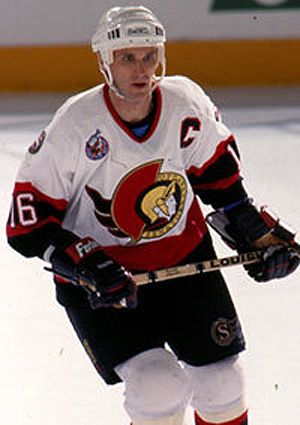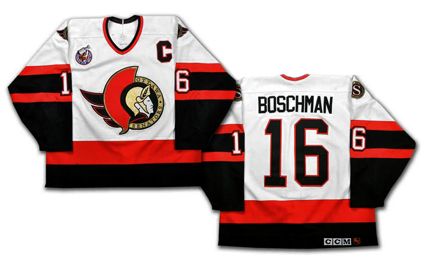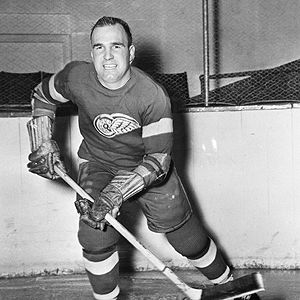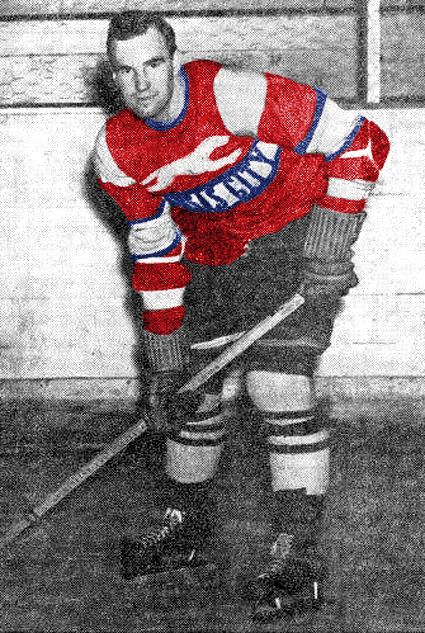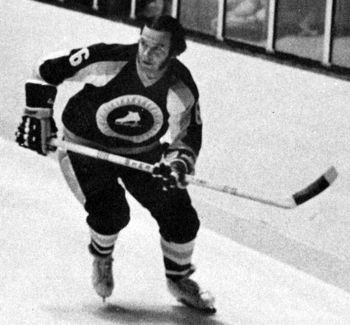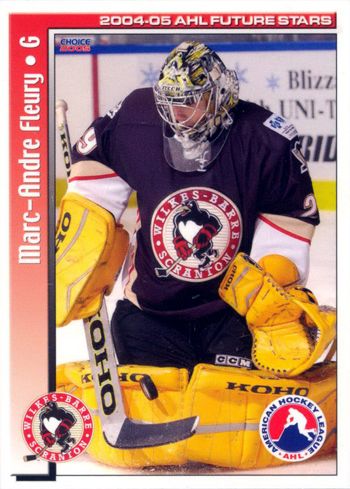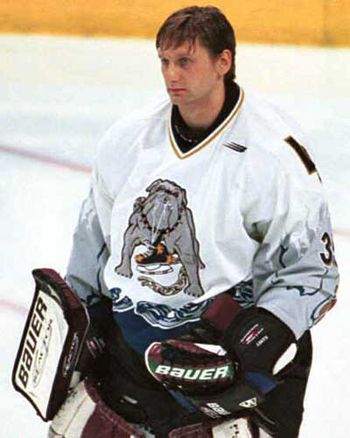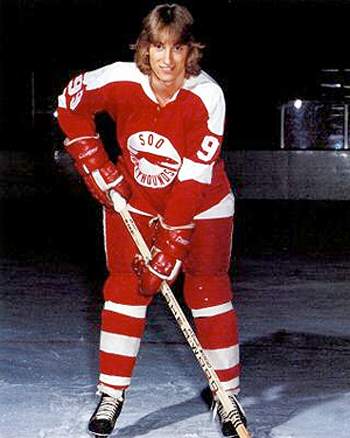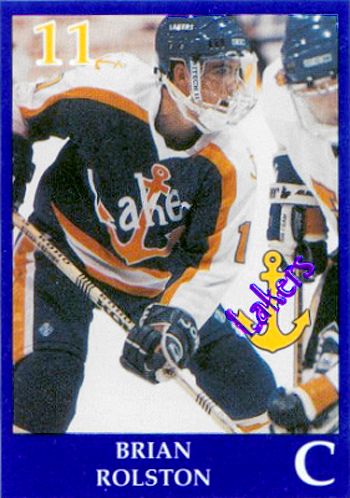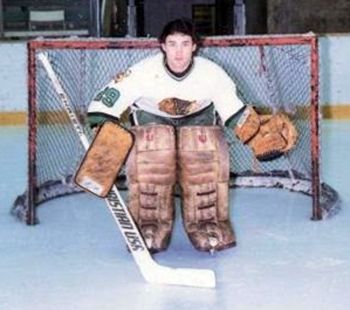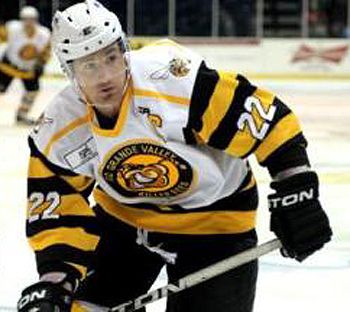When the NHL expanded for the 1992-93 season, franchises were awarded to Tampa Bay, Florida and Ottawa, Ontario.
The logo used by the group seeking a new franchise
It marked a return of the NHL to Ottawa for the first time since the city's original franchise relocated to St. Louis for the 1934-35 season.
The new NHL franchise chose to revive the name of the original franchise, the Ottawa Senators, as well as retaining the original Senators colors of red, black and white.
The club was placed in the Adams Division along with NHL powers the Boston Bruins, Montreal Canadiens, a rapidly improving Quebec Nordiques as well as the Buffalo Sabres and Hartford Whalers.
Assembling a roster was no easy task, as the other existing NHL clubs were allowed to protect 2 goaltenders and 14 skaters in the 1992 NHL Expansion Draft. The Senators General Manager Mel Bridgeman, picking first, selected goaltender Peter Sidorkiewicz from Hartford, defensemen Brad Shaw of New Jersey, Darren Rumble of Philadelphia, Dominic Lavoie from St. Louis, Brad Miller from Buffalo, Vancouver's Ken Hammond, Winnipeg's Kent Paynter and wingers Sylvain Turgeon from the Canadiens, Mike D. Peluso of Chicago, Jim Thomson away from Los Angeles, Lonnie Loach from Detroit, Jeff Lazaro from Boston, Buffalo's Darcy Lowen and Blair Atcheynum from Hartford plus centers Rob Murphy, also from Vancouver, Mark Lamb from the Oilers, eventual team captain Laurie Boschman of the Devils and Mark Freer away from the Flyers.
The Senators also added Norm MacIver in the 1992 NHL Waiver Draft, plucking the defenseman off the Oilers roster, signed Jamie Baker as a free agent fresh out of college at St. Lawrence University, acquired Jody Hull in a trade with the Rangers and added free agents goaltender Daniel Berthiaume and winger Doug Smail.
Apparently the Senators management felt they were the most important part of the franchise based on their inaugural team photo
Picking second in the 1992 NHL Entry Draft provided prospects for the future, but nothing to help out their first season of play, as their first ever draft pick Russian Alexei Yashin spent the 1992-93 season with Dynamo Moscow of the Russian SuperLeague.
With that collection of talent, the Senators embarked upon their first NHL season with low expectations but shocked the hockey world and thrilled their fans with an opening night upset over that season's eventual Stanley Cup champions, the Montreal Canadiens by a score of 5-3, with Neil Brady, scoring the first ever Senators goal, Smail, Ken Hammond and Turgeon giving the Senators a 4-3 lead with Smail's empty net goal with 15 seconds remaining sealing the win for Ottawa in front of a sold out crowd of 10,449 at the Ottawa Civic Centre.
The Senators begin play by shocking the eventual champion Canadiens
Reality struck back hard as the Senators lost their next game at Quebec 9-2 followed by a 6-3 loss at Boston, a defeat at the hands of the lowly Whalers 4-1 in Hartford and finished off their road trip with losses at Washington (5-1) and Toronto (5-3).
After three games at home, all losses, they returned to the road with a trip to Buffalo, a 12-3 pasting at the hands of he Sabres. They rebounded with a tie at home against the same Sabres prior to a western swing through Edmonton, Calgary and Vancouver which all resulted in defeats by three goals or more.
Rob Murphy
A pair of losses at home preceded a 1-0 defeat at the hands of their expansion brothers the Tampa Bay Lightning and a 7-2 pounding by the Flyers in Philadelphia, which ran their road losing streak to 11. Two more defeats at home were followed by a 3-1 loss at Montreal prior to returning home to lose to Boston before defeating New Jersey 3-1, which gave them only their second win and ended their winless streak at 21 (0-20-1).
A loss at Buffalo preceded a five game home stand, which saw the Senators go 1-3-1.
Still, the road losing streak continues with losses at Hartford (6-2) and Boston (4-2). After a tie with Calgary at home, a new losing streak began with a loss at home to Detroit, another pasting on the road, a 9-2 shellacking by the Islanders and a 6-1 loss at Toronto. Eight more losses followed, including defeats at Quebec, Detroit, the Rangers and Devils, extending the losing streak to 11 in a row.
Their losing streak was ended with a 3-2 win at home over the equally poor second year San Jose Sharks. Eight more losses came next, including on the road to Pittsburgh (6-1), Minnesota (7-2), Washington (6-4) and St. Louis (5-1), extending the road losing streak to 25 games.
Marsh attempts to contain Sergei Fedorov
A 5-2 win over Hartford at home was good for the spirt and, after a 5-3 loss at Montreal, the Senators finest run of form all season saw them tie the Winnipeg Jets at home 4-4 before wins over the Oilers 3-2 a Buffalo 4-2, their only back-to-back wins of the season, gave them a three game unbeaten run.
It came to an end as soon as the Senators returned to the road however, as six more losses arrived, including on the road to Philadelphia (8-1), Quebec (6-4), Montreal (5-4) and Winnipeg (6-3), their 30th loss in a row away from home.
Although they beat Pittsburgh and Quebec at home, sandwiched in between was another road loss, this one at New Jersey 5-2. The win over Quebec would be the final one for some time, as 14 straight defeats awaited the Senators as the Canadian Death March continued, which included yet more road losses coming at San Jose (3-2), Los Angeles (8-6), Chicago (4-2), Boston (6-3), Montreal (4-3), Buffalo (3-1), Pittsburgh (6-4) and Hartford (7-3), a game which broke the NHL record of 37 consecutive road losses by the 1974-75 Washington Capitals.
Back at home the losing streak was extended with a 3-0 shutout at the hands of Vancouver and a 6-1 humiliation by the Whalers.
The weary Senators then once again packed their gear, this time for the trip to the Nassau County Coliseum to face the Islanders, who held a 2-0 season advantage after a 9-3 win on Long Island and a 7-2 win in Ottawa.
As anticipated, the Islanders broke out in front with a power play goal less than two minutes into the game before Turgeon evened the score with a goal at 16:52. After the teams swapped goals in the first half of period number 2, the Islanders went ahead 3-2 on a goal by Pat Flatley with just 32 seconds remaining.
Then the unexpected happened.
Bob Kudelski tied the game half way through the third period at 9:57 and Sidorkiewicz held the Islanders at bay until Boschman put the Senators in the lead with just 56 seconds remaining when he beat the Islanders Glenn Healy. Boschman also added an empty net goal with just one second left on the clock to end the Senators record setting 38 game road losing streak on this date in 1992.
Team captain Boschman
Alas, losses at Boston (4-2) and Quebec (6-2) left the Senators at 1-40-0 for the season on the road before closing out their inaugural season with a loss at home to Boston (4-2).
The Senators, with a payroll of just $9 million, also set records for the longest home losing streak at 11 from October 27 to December 8th as well as their single road victory setting the mark for the fewest road wins in a season. Still, the team met ownership's stated goal for the season, not setting the record for the fewest points, as the Senators final record of 10-70-4 earned them 24 points, three better than the 1974-75 Captials.
"Now we know what the survivors of the Titanic felt like" said defenseman Hammond at the end of the season.
When the smoke cleared, defenseman MacIver lead the club in scoring with 17 goals and 63 points,, easily beating center Baker's 48 points. sidorkiewicz got 8 of the Senators 10 wins while losing 46, tying 3 and finishing with a 4.43 goals against average.
Peter Sidorkiewicz
And the Senators reward for their season of futility? Using the #1 overall pick in the 1993 NHL Entry Draft, Ottawa selected Alexandre Daigle, regarded as one of the biggest disappointments in draft history, while passing on such players as Chris Pronger, Paul Kariya, Jason Arnott, and Saku Koivu, who were all taken later in Round One that year.
Today's featured jersey is a 1992-93 Ottawa Senators Laurie Boschman jersey as worn during the Senators inaugural season. It would be Boschman's only season with Ottawa, as he was then at the end of his 14 year NHL career, appearing in just 7 games in Great Britian two seasons later to close out his playing days.
Today's video segment begins with highlights from the first game in Senators history, their unexpected upset win over the Canadiens.
Next is the Senators first ever goal from that game, when Brady beat Patrick Roy in the second period.

